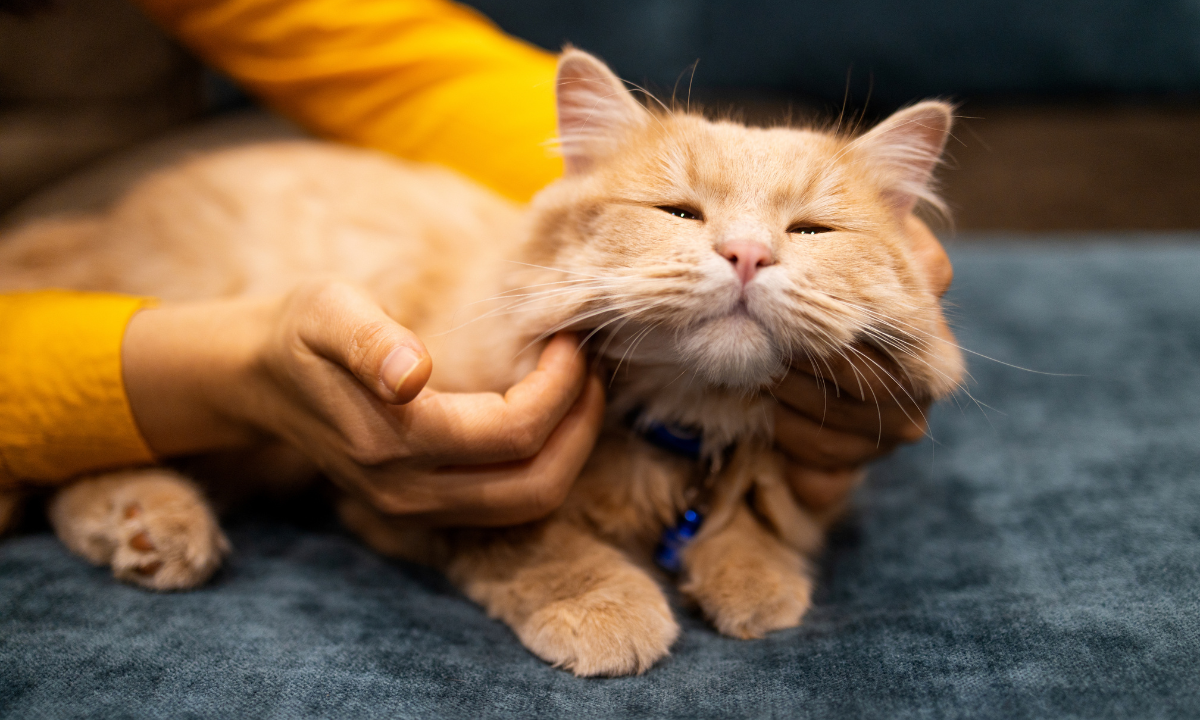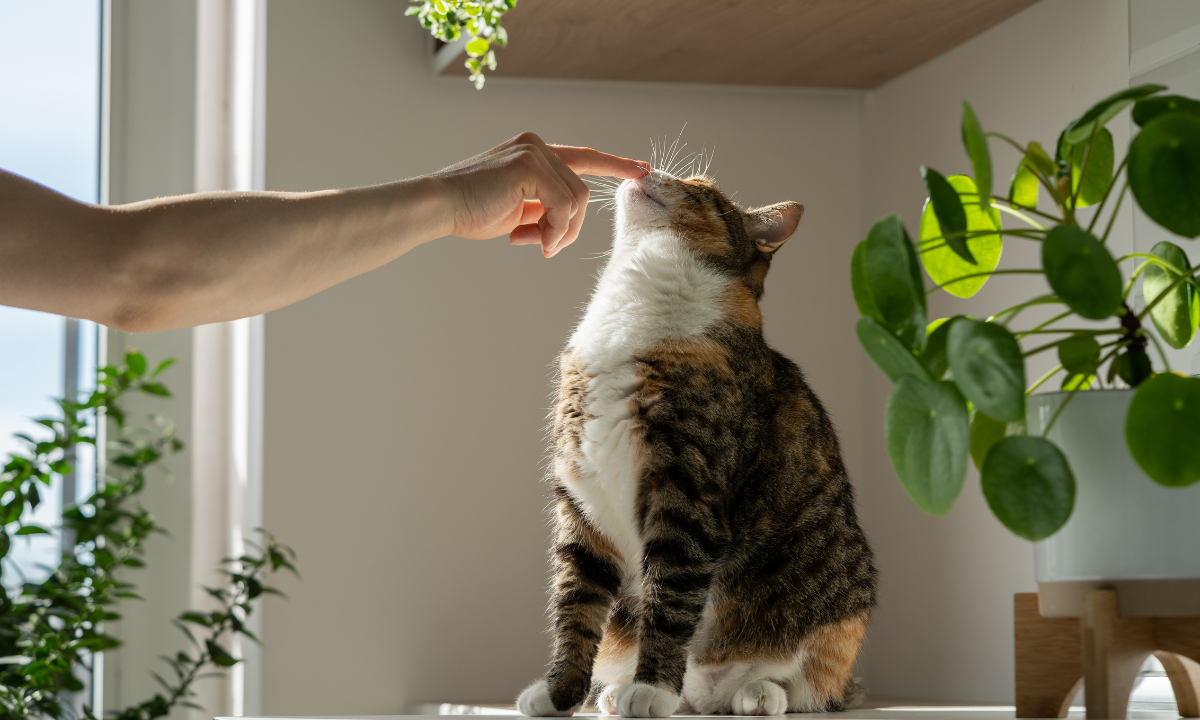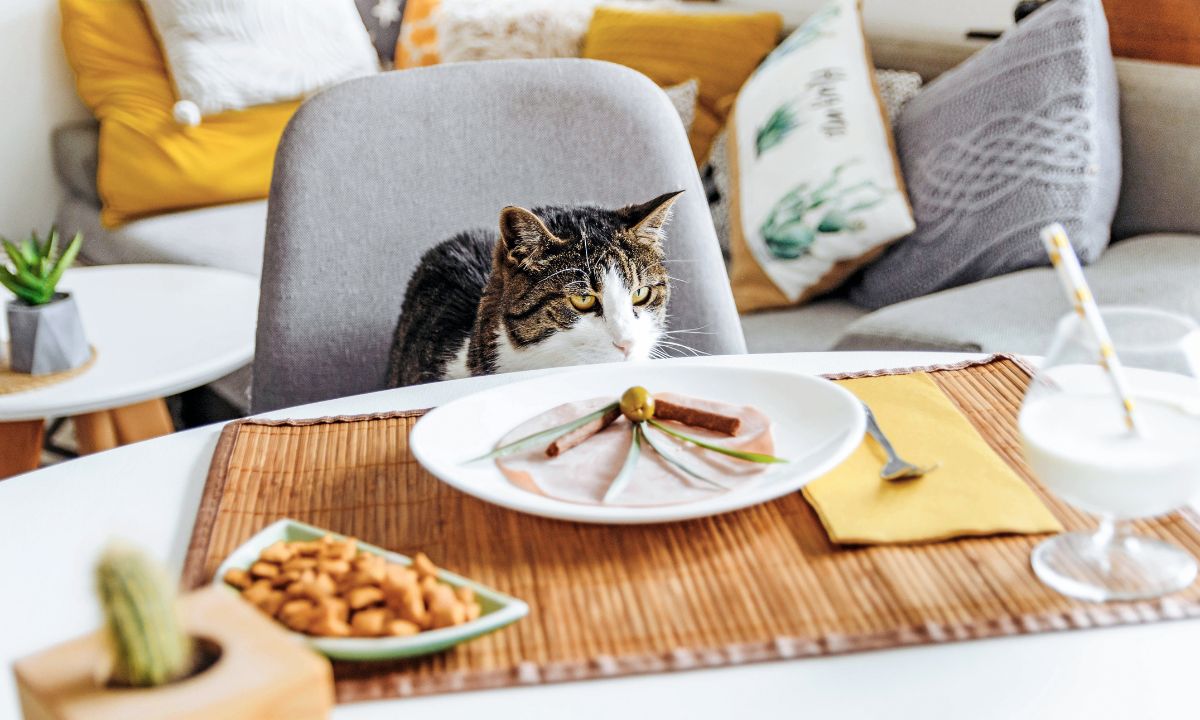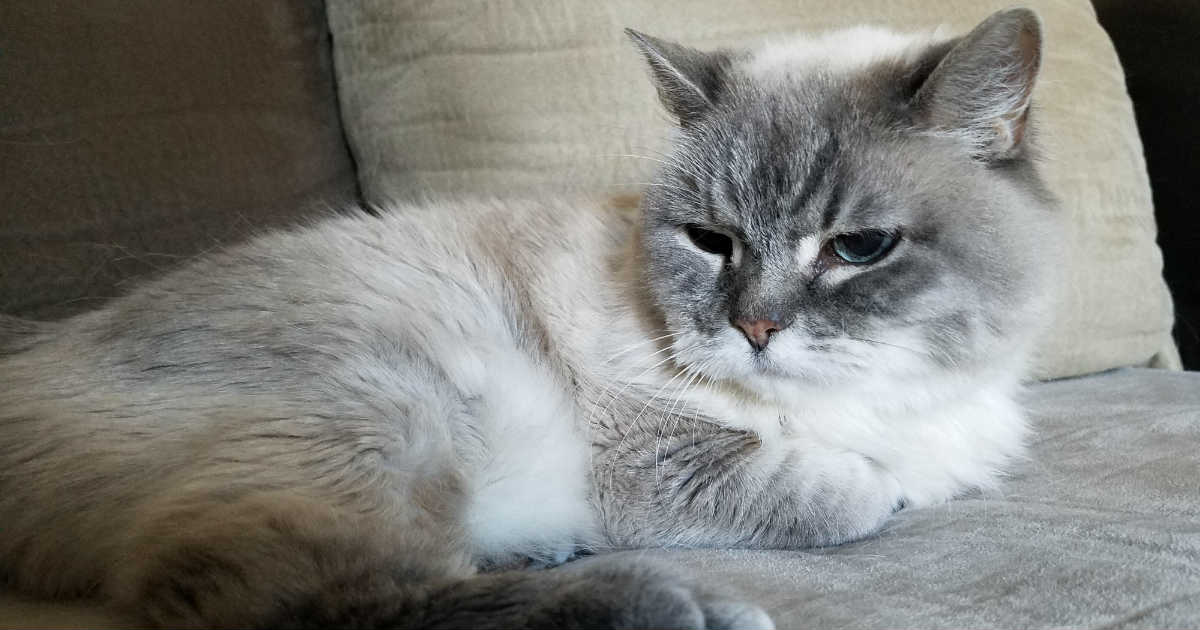Cat safety first! This guide reveals toxic foods & plants to avoid at home, crucial for new cat owners. Keep your furry friends safe & happy!
Bringing a cat into your home fills it with purrs, playful moments, and lots of love. For many of us, our pets quickly become cherished family members.
But as loving cat parents, it's crucial to be aware of the hidden dangers that might be right in your home, in your kitchen, garden, or even your living room. From seemingly innocent houseplants to everyday human snacks, many of them are toxic plants and foods for cats.
This guide is made for new cat owners and anyone concerned about their furry companion's health and well-being. It will help you identify and avoid these potential threats, and ensure your beloved pet stays happy, healthy, and safe.

Common Toxic Foods for Cats
Our feline friends often beg for a bite of our meals, but many everyday human foods are dangerous, and even deadly for them, so keep them far away from your cat. Always remember, if you're not sure, don't share!
- Chocolate & Caffeine: These contain substances called methylxanthines, which are very bad for cats. Even small amounts can make them vomit, have diarrhea, shake, have fits, or even die. This includes all kinds of chocolate (dark, milk, white, cocoa powder) and drinks with caffeine like coffee, tea, and energy drinks.
- Onions, Garlic, and Chives: These common cooking ingredients can harm a cat's red blood cells, leading to serious health problems like anemia. This is true whether they are fresh, cooked, powdered, or dried. Even a little bit can be harmful over time.
- Grapes & Raisins: They can cause serious kidney failure in cats, even just a few can be dangerous.
- Alcohol: Any amount of alcohol is extremely dangerous for cats. Even a small taste can cause severe sickness, liver damage, coma, or death.
- Dairy Products (Lactose Intolerance): Unlike what you see in cartoons, most adult cats cannot digest milk very well. Giving them milk, cheese, or other dairy can lead to tummy aches, vomiting, and diarrhea.
- Raw Potatoes, Meat, Fish, & Eggs:
-
- Raw Potatoes: The green parts or sprouts of raw potatoes contain a toxic substance called solanine, which can be harmful. Cooked potatoes are generally safer in small amounts, but raw ones should be avoided.
-
- Raw Meat, Fish, & Eggs: These can carry bad bacteria like Salmonella and E. coli that can make your cat very sick, just like they can make humans sick. Raw eggs also have a substance that can stop your cat from getting an important vitamin. Always cook these foods well before giving them to your cat, or stick to proper cat food.
- Avocado: Avocado contains a substance called persin, which can cause vomiting, diarrhea, and in some cases, serious inflammation of the pancreas (pancreatitis) in cats.
- Cooked Bones: Cooked bones become brittle and can easily splinter. These sharp pieces can cause choking, break teeth, or cause serious internal injuries like punctures in your cat's mouth, throat, or digestive system.
- Stone Fruits (Cherries, Peaches, Plums, Apricots): The pits (or stones) of these fruits contain cyanide, which is highly poisonous. Even if the flesh isn't toxic, the pits are a serious danger and also a choking hazard. Always remove pits completely.
- Macadamia Nuts: The exact reason is not fully understood, but they can cause weakness, tremors, vomiting, and fever in pets. It's best to keep them away from your cat.
Dangerous Plants for Cats (Common Household & Outdoor)
While plants add beauty to our homes and gardens, many are hidden dangers for curious cats who might chew on them. Knowing which ones to avoid is crucial for your cat's safety.
- Oleander: This popular outdoor shrub, often seen in gardens and public spaces in warmer climates, is highly poisonous. All parts of the plant contain powerful heart toxins that can cause severe heart problems, vomiting, diarrhea, tremors, and even death.
- Autumn Crocus: This plant is different from the spring crocus and is much more dangerous. It contains toxins that can cause severe vomiting, bloody diarrhea, damage to internal organs, and even bone marrow issues.
- Sago Palm: Often found in tropical gardens and as a houseplant, it’s extremely toxic. All parts, especially the seeds (nuts), contain a powerful toxin that can cause severe liver damage, vomiting, diarrhea, seizures, and even death.
- Tulips: The bulbs of tulips are the most dangerous part, but all parts of the plant contain substances that can cause vomiting, diarrhea, and excessive drooling if a cat chews on them.
- Aloe Vera: Often kept as a medicinal plant, the gel inside is generally safe, but the outer green part of the leaf contains compounds called saponins. If a cat eats this, it can cause vomiting, diarrhea, and lethargy.
- Lily of the Valley: This plant contains toxins that can affect your cat's heart. Ingestion can lead to heart rhythm problems, vomiting, diarrhea, disorientation, and even seizures.
- Rhododendron: These popular flowering shrubs, similar to Azaleas, contain toxins that can cause vomiting, diarrhea, weakness, and potentially severe heart problems if ingested by cats.
- Lilies: This is one of the most dangerous plants for cats. All parts of true lilies (like Easter, Tiger, Asiatic, Day, and Japanese Show lilies) are highly toxic and can cause acute kidney failure, which is often fatal if not treated immediately. Even a tiny amount of pollen on your cat's fur, licked off during grooming, can be deadly.
- Dieffenbachia (Dumb Cane), Pothos (Devil’s Ivy), Philodendron: These are very common houseplants, and contain tiny, sharp crystals. If a cat chews on it, they can cause intense pain, irritation, burning, swelling of the mouth and throat, excessive drooling, and difficulty swallowing.

Signs of Poisoning in Cats
Even with the best precautions, accidents can happen. Knowing the signs of poisoning in your cat is incredibly important for getting them immediate help. If you notice any of these symptoms, especially if you suspect they've eaten something harmful, contact your vet right away.
- Vomiting & Diarrhea: These are often the first and most common signs of an upset stomach or poisoning. Look for frequent or severe episodes, or the presence of blood.
- Lethargy & Weakness: If your cat seems unusually tired, sleepy, unresponsive, or struggles to stand or move, it could be a sign of poisoning. They might seem generally unwell or unusually quiet.
- Difficulty Breathing: Look for changes in their breathing, such as rapid, shallow, or difficult breaths, panting, or coughing. Their gums might also look pale or bluish.
- Excessive Drooling: While cats can drool when stressed or nauseous, sudden and heavy drooling, especially after chewing on a plant, can indicate irritation or toxicity.
- Seizures & Tremors: These are very serious neurological signs. Seizures can involve uncontrolled muscle twitching, collapsing, or convulsions. Tremors are involuntary muscle quivering or shaking. If you see these, it's an emergency.

What to Do If You Suspect Poisoning
If you ever suspect your cat has ingested something toxic, time is running out. Quick action can save your cat's life.
1. Contact Your Veterinarian IMMEDIATELY: This is the most crucial step. Do not wait for symptoms to worsen. Call your regular vet, an emergency animal clinic, or a pet poison control hotline right away.
2. DO NOT Induce Vomiting Unless Directed: It might seem like a good idea to make your cat vomit, but doing so can actually cause more harm. Some poisons can cause damage on the way back up, or your cat could inhale vomit into their lungs. Only induce vomiting if a veterinary professional specifically tells you to and guides you on how.
3. Gather Information: When you call for help, be prepared to give as much detail as possible. This includes:
- What your cat might have eaten (name of the plant, type of food, brand of medication). If possible, bring the packaging or a sample of the plant with you to the vet.
- How much they might have eaten.
- When they ate it (the approximate time).
- Your cat's weight and any existing health conditions.
- Symptoms you've observed.
Creating a Safe Environment
The best way to protect your cat is to prevent them from coming into contact with dangerous items in the first place. By making a few mindful changes, you can ensure your home is a safe haven for your curious feline friend.
- Store Dangerous Foods Securely: Keep all human foods, especially those listed as toxic, in sealed containers, high cupboards, or in the refrigerator. Ensure food storage is always closed. Be extra careful during meal times, especially with tempting foods.
- Identify and Remove Toxic Plants: Go through your home and garden with the list of dangerous plants we discussed. If you have any, the safest option is to remove them entirely. If removal isn't possible (ex: large garden plants), ensure your cat cannot access them by fencing them off or keeping your cat indoors.
- Introduce Safe Alternatives: Cats naturally love to chew on plants. Provide safe options like cat grass (wheatgrass, oat grass, rye grass), catnip, or spider plants, which are non-toxic and fun for them. This can deter them from chewing on unsafe plants.
- Educate All Household Members: Make sure everyone living in your home, including children and guests, knows which foods and plants are dangerous for your cat, and ensure no one accidentally offers a toxic treat or leaves a hazardous plant within reach.

Conclusion
Being a cat parent is a truly rewarding experience, filled with endless purrs and cherished moments. By being aware of the toxic plants and foods for cats that might be in your home, you're taking a huge step in protecting your beloved companion. Your vigilance in creating a safe environment and knowing the signs of trouble can truly make all the difference.
Keep this guide handy, share it with fellow cat owners, and always feel confident reaching out to your veterinarian with any concerns.
Don’t forget to check out our other blog about your favorite pets, so you don't miss anything!











